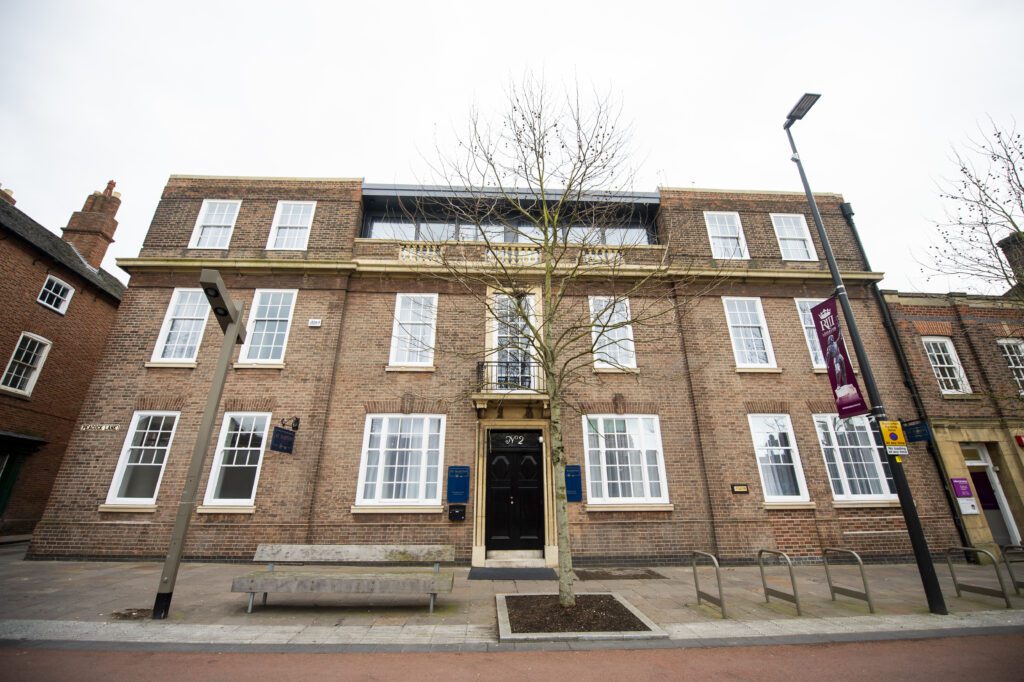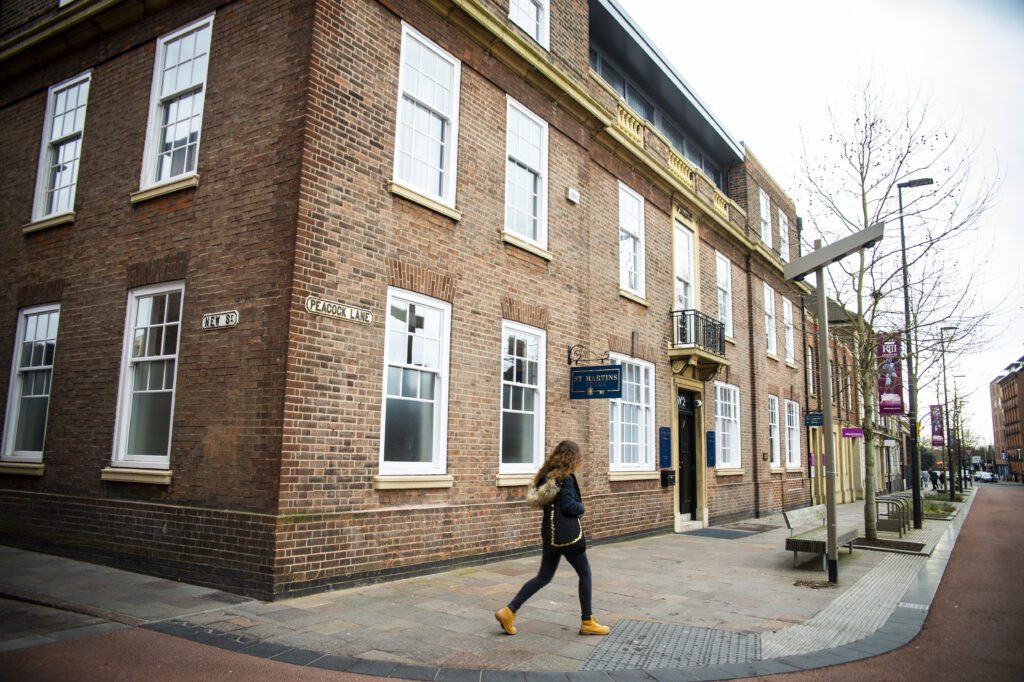
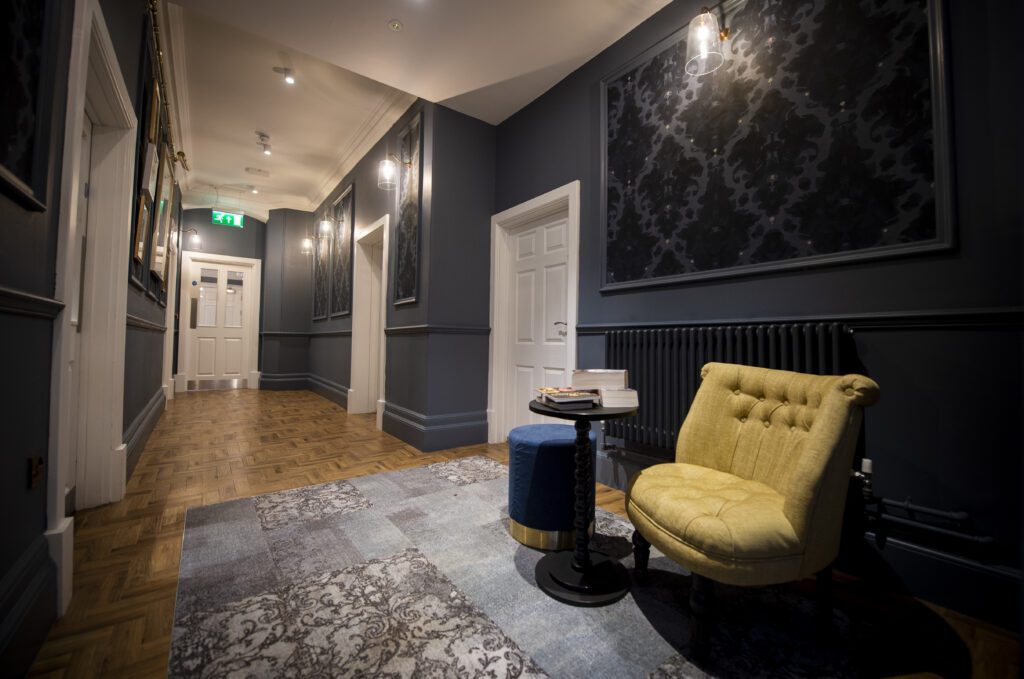
The sensitive refurbishment and extension of two Grade II Listed buildings in Greyfriars conservation area in Leicester city centre, into a 28-bed boutique hotel for the Diocese of Leicester.
CLIENT: Diocese of Leicester
ARCHITECT: Corporate Architecture
PROGRAMME: 41 weeks
VALUE: £1.8 million
The project was secured at RIBA Stage 3 drawings, with many original features – internal cornices, ceilings and floors – needing to be retained and protected.
The hotel would provide accommodation for the adjacent conference centre, visitors to the cathedral and hotel venue for weddings. This would generate revenue for local retail and catering.
With the Diocese retaining the building on completion we suggested improving sustainability credentials to reduce running costs. We worked with the Diocese and the Heritage Officer to apply five key Step to Zero principles to maximise sustainable outcomes on the project:
Durable & maintainable design
Made the penthouse extension in timber (low embodied carbon), manufactured off-site reducing embodied carbon.
Eco friendly materials use
Repaired rather than replaced timber joists, beams, doors and windows and flooring.
Retained original fireplaces.
Repairing rather than renewed timber windows and improving performance with thin double glazing within existing windows designed for single glazing.
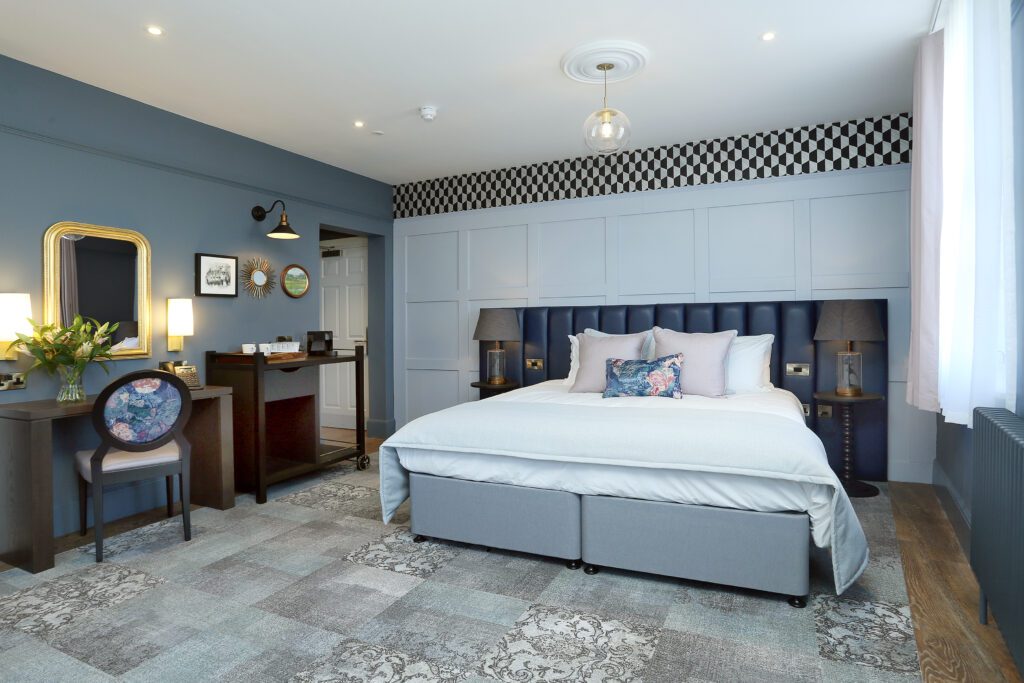

Indoor environmental quality
Increased the performance standard of insulation to reduce energy.
Provided slim high performing insulated plasterboard to non-sensitive external walls / roof / cellar areas (floor space critical).
Manufactured ‘super-thin’ double glazing in our joiners shop for heritage windows to retain look of 1800’s glazing but provide improved thermal capacity.
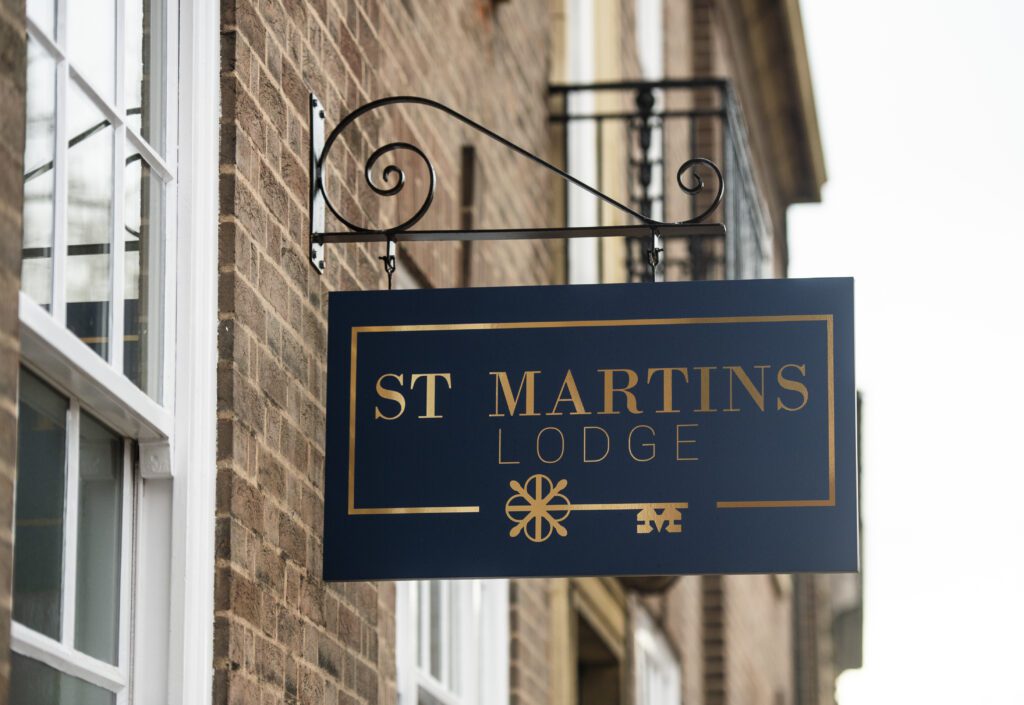
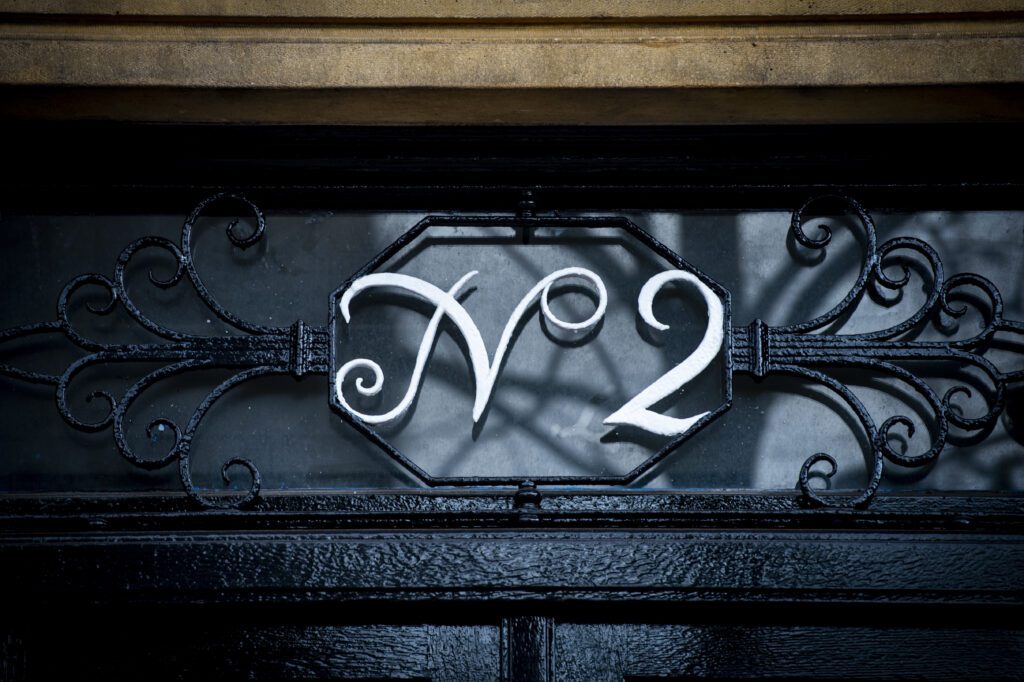
Energy efficiency
Installed low energy heating system – the existing cast iron boilers (installed in the 1960’s) were replaced with high efficiency condenser boilers, controlled by a new BMS which reduced the energy consumption of the property by 48% and enhanced the level of control for the individual bedrooms and preferences of the hotel customers.
Reduce carbon generated in construction activities by
Consolidated works on hotel and adjacent carpark to reduce carbon in construction
Used public transport to bring operatives to site reducing carbon in construction further
Through the above the client was able to see the energy performance of their asset improve from an E rated EPC to a B.
